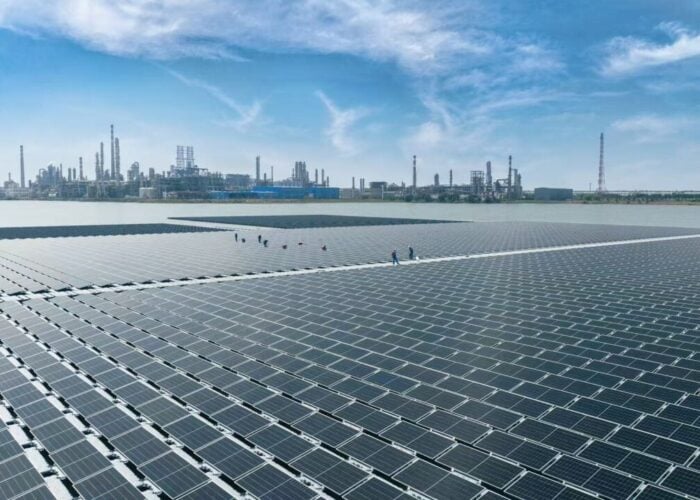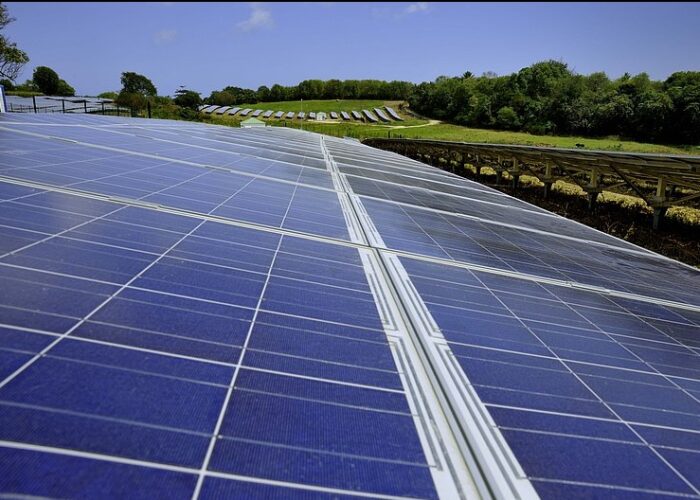As the solar investment tax credit (ITC) steps down at the end of 2016 under current US law, the solar PV industry faces an uncertain future. Projections for 2017 span every possible scenario with extremely different outlooks. For example, a recent market report from Deutsche Bank depicts a vibrant solar industry that reaches grid parity in more than 41 states without further legislative action, while a recent paper from Stanford Graduate School of Business finds the solar PV industry to be uncompetitive in 2017 across nearly all of the representative states considered.
Projections from leading energy models forecast a coming solar cliff due to the ITC step down that will depress solar installations for many years to come. For example, the Annual Energy Outlook 2014 from the US Energy Information Agency (EIA) and its 2015 update found an 80-97% decrease in utility-scale PV from 2016 to 2017 and an 88-94% decrease in distributed PV. Recently, the Solar Energy Industries Association (SEIA) refuted these projections but agreed with the spectre of a coming cliff.
Unlock unlimited access for 12 whole months of distinctive global analysis
Photovoltaics International is now included.
- Regular insight and analysis of the industry’s biggest developments
- In-depth interviews with the industry’s leading figures
- Unlimited digital access to the PV Tech Power journal catalogue
- Unlimited digital access to the Photovoltaics International journal catalogue
- Access to more than 1,000 technical papers
- Discounts on Solar Media’s portfolio of events, in-person and virtual
A new policy brief from the George Washington University Solar Institute (GWSI), which analyses several options for the ITC beyond 2016, estimates that the ITC step down would increase the costs of PV electricity by roughly 10%. This price spike, mitigated in part through assumed installation cost reductions and a lower cost of capital in 2017, induces less severe but still significant deployment reductions: a 42% decrease in utility-scale PV and a 15% decrease in distributed PV. These projections are more in line with the recent SEIA/GTM Research US Solar Market Insight report that anticipates a 57% drop in total PV, the vast majority from the utility-scale market.
Extension and gradual reduction of the ITC
Despite SEIA’s recent dismissal of an ITC phase down due to current and historical tax subsidies for traditional energy sources, PV will become less dependent on the ITC over time. According to GWSI analysis, utility-scale PV deployment will become much less sensitive to the ITC level by 2022 than it will be in 2017. This increasing independence of ITC support, if realised, would allow Congress to reduce the permanent 10% ITC level over the long term with only minimal impacts on solar deployment. Such a long-term phase out could offset the government’s outlays from raising the ITC level in the near term when the solar industry really needs it.
In 2017, even a step down to a 20% ITC level would reduce utility-scale PV deployment by over 30%. In contrast, a full step down to the permanent 10% ITC level in 2022 would only reduce utility-scale PV deployment by about 10%.
To avert the cliff in 2017, Congress could offer a softer landing by extending the ITC at the current 30% level through to 2018 and changing the qualifying criteria to include projects that “commence construction” rather than only those that are “placed in service”.
The prudence and optimal timing of an ITC phase out beyond 2018 are unsettled. If Congress were to provide long-term certainty for the solar industry with a prescribed phase out, the ITC level could decrease by 5% each year starting in 2019. Following this path, the ITC would be at the 10% level in 2022 and go to zero in 2024. GWSI’s analysis suggests that solar deployments would be impacted by at most 10% under this plan.
Legislation that follows this phase out plan would unlikely be “scored” as a revenue raiser or even deficit neutral within the official 10-year “budget window” that the Joint Committee on Taxation (JCT) uses to evaluate tax proposals. JCT would likely score the plan to be a revenue raiser, however, if the budget window were just a few years longer. Nevertheless, temporary tax provisions are commonly extended en masse but only occasionally offset with revenue increases elsewhere.
Of course, these impacts on the US Treasury are the difference between two modelled futures: one under current law and the other with the plan enacted into law. In reality, economic growth and associated tax receipts from a booming solar industry may offset the government’s investment either in part or in full.
Energy innovation and diffusion insulated from the political process
Seven years ago the ITC extension passed the US Senate with near unanimous support, but political winds can change abruptly. Today the ITC faces an uncertain future, generating the current industry dynamic in which some companies are planning for the ITC to expire, others are planning for an extension and others yet are hedging between the two. This illustrates why the political process is not apt for bringing a technology like PV to full maturity and scale.
A permanent technology-neutral ITC, which includes an automatic phase-out provision for fully competitive technologies, would eliminate the market guessing game and insulate innovation from the political process. Along with other complementary innovation policies, it would incentivise the innovation and diffusion of new energy technologies and help to finance and bring them to scale.
Regardless of what Congress decides to do with clean energy incentives, it should work to ensure that electricity markets accurately capture the full costs and benefits of each generating technology, create policies with parity across energy technologies (e.g. providing clean energy access to master limited partnerships) and modernise the electric grid to support both centralised and decentralised power sources as recommended in the Department of Energy’s recently released Quadrennial Energy Review.






